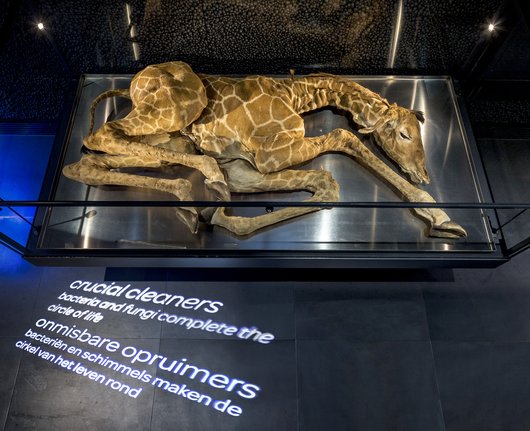Crucial cleaners
Death is an inevitable part of the circle of life. While death means the end for one individual, for another it is actually the beginning. Microbes are a vital link in this process.
 The invisible world
The invisible world
Death is an inevitable part of the circle of life. While death means the end for one individual, for another it is actually the beginning. Microbes are a vital link in this process.
Around 1600, Shakespeare’s Hamlet used the phrase “… ashes to ashes, and dust to dust” to describe the breakdown of our body. Not until the 20th century did it became clear that microbes are the driving force behind this process. In every square kilometre, the total weight of animals that die a natural death is no less than 5,000 kg per year. If these remains were left unchanged, the world would be a uninhabitable place due to all the death organic material. Thus, in breaking down dead material, microbes play an invaluable part in the circle of life.
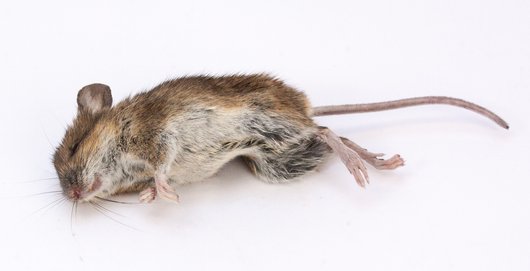
Life on Earth is full of valuable substances. No new substances are being made, so the stock is limited. Thus it is important that, when a plant or animal dies, the materials of which they are composed are recycled. Normally, we only see the visible waste disposers at work. These range from fly and beetle larvae, to vultures and African hunting dogs. Yet microbes, such as bacteria and moulds, play a much greater part in the breakdown of dead material.
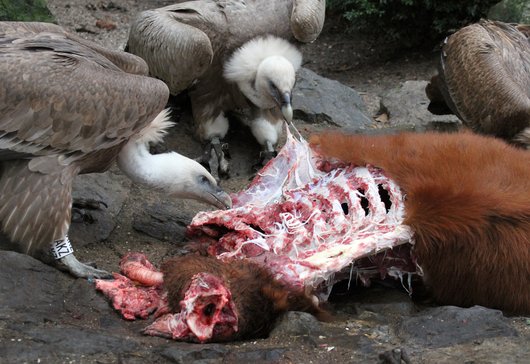
The process of disposing of a cadaver begins just a few minutes after death. Surprisingly enough, this is carried out by the dead animal’s own microbes. Once its heart has stopped beating, the cells receive no more oxygen. They burst open, releasing enzymes that attack and break down the surrounding cell membranes. Now that the body has slowly but surely started to disintegrate, its own bacteria disperse through the cadaver and begin feeding on the surrounding tissues. Soon after that, bacteria and moulds from the animal’s environment start breaking down its remains.
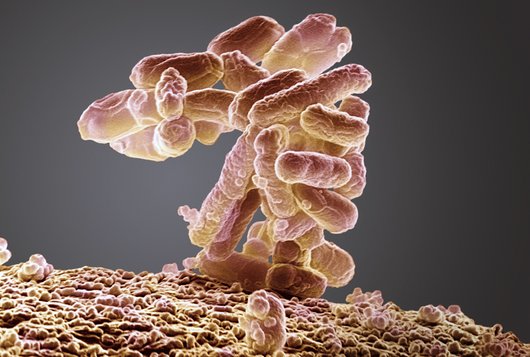
Many microbes of this type have specialized in disposing of specific substances. For example, Pseudomonas, Bacillus and Micrococcus bacteria are involved in protein breakdown (a process known as proteolysis). Thiobacillus bacteria convert the amino acids released by this process into cadaverine and putrescine. These substances are responsible for the foul smell. Fats are disposed of by Clostridium perfringens. The latter species is found almost everywhere in nature, but it is also an integral part of our own gut microbiota. This bacterium has the shortest generation time of any organism on Earth (dividing again after just 6.3 minutes), so it is a major player in carcass disposal.
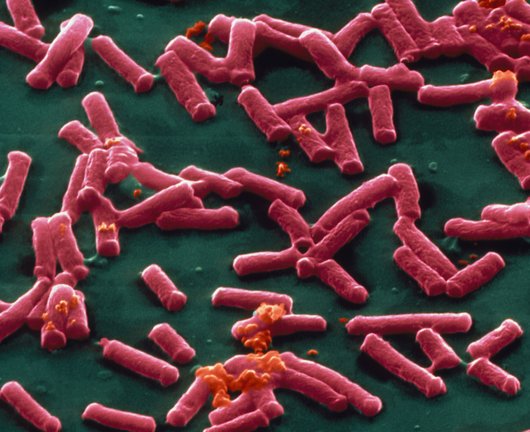
The microbes that break down cadavers are also known as ‘decomposers’. They convert organic substances from dead animals into inorganic or mineral substances, such as CO2, H2O and nutrients. They make the primary building blocks of life available to other organisms in the ecosystem, such as plants, small animals that dwell in soil or in the beds of oceans, lakes and rivers, and other microbes. Given enough time, they can break down almost anything. In this way, these microbes enable new life to develop, thus completing the circle of life.
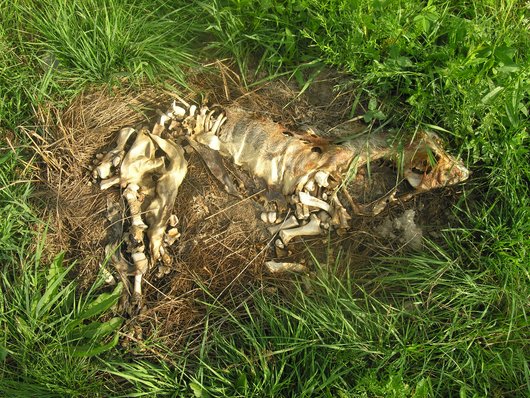
Due to the extreme changes that take place in a body after death, the post-mortem microbiome (the body’s own microbial community) no longer resembles that of the living organism. For instance, the lack of oxygen means that aerobic bacteria (which require oxygen) are replaced by anaerobic bacteria (which live without oxygen). As a result, the microbial community on a cadaver is described using a different name. It is known as the thanatomicrobiome, from the Greek word for death, thánatos).
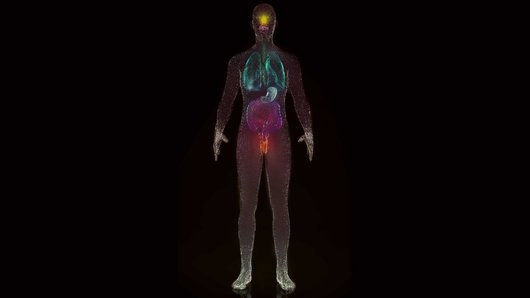
Microbes play an indispensable part in death, they are part of the circle of life. Microbes are essential for retrieving materials and making them available to the natural world. Without microbes not only would the world be an uninhabitable place due to all the death organic material, we would also run out of the fundamental building blocks of life. Micropia used the body of a young giraffe to demonstrate the role of microbes as recycling organisms. This giraffe died of natural causes in 2014, shortly after its birth in Artis Royal Zoo. Micropia placed its remains in a specially conditioned room for a few months, where it was broken down by many different microbes under controlled conditions. Ultimately, so-called gamma irradiation was used to destroy the microbes’ DNA, bringing the breakdown process to a halt. The result of this microbial disposal process can now be seen in Micropia.
